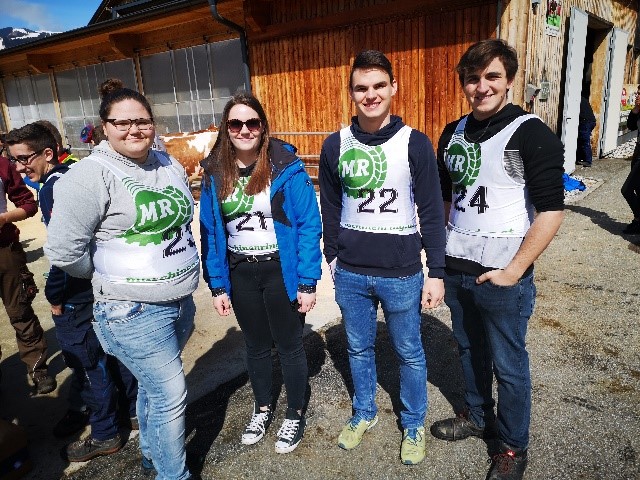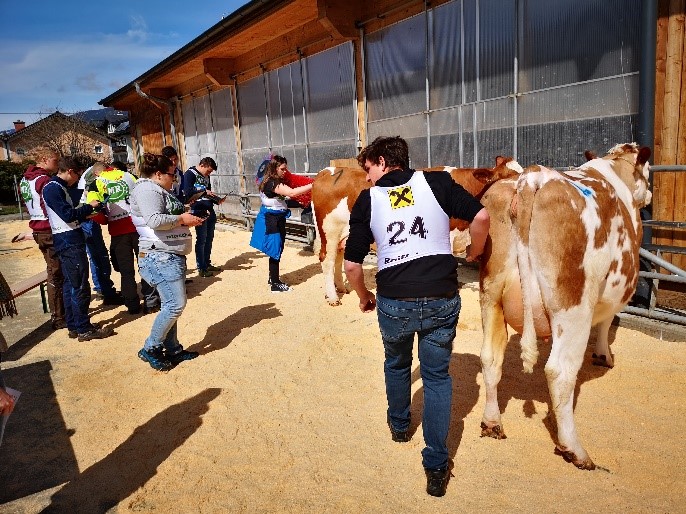Accompanied by Mr. Ringdorfer Christian, we headed towards Bruck an der Glocknerstrasse in the morning, where this year's edition took place. The event was ceremonially opened by the technical school's brass band before the program continued with a meeting with the cattle breeding consultant, who had previously assessed the animals to be assessed.
The host also knew how to impress with a well-organized supporting program. The participating students were provided with a guide who accompanied the groups through school and throughout the day. A total of 74 starters were involved in the Fleckvieh breed and 9 each in the Brown Swiss and Holstein breeds. Groups of 8 people each had 20 minutes to describe 2 animals of the chosen breed. At the end, the assessments of the individual characteristics were compared with those of the breeding consultant and the overall deviation was calculated.
Even though our students were not able to achieve a top 3 placement, they were able to achieve a strong 5th place out of 23 participating schools in the school rankings.
What is animal assessment actually about?
The aim of the linear description of cattle is to express their exterior (outward appearance) in numbers as best as possible. For example, in the Simmental breed, a total of 21 individual characteristics are taken into account in the assessment and in the end you receive an overall grade for the 4 main characteristics: frame, musculature, feet and legs and udder, with a value between 68 (worst) and 93 (best). Only through this description of the offspring as well as performance data and gene typing can conclusions be drawn in practice about the breeding work of the insemination stations and the farmers.
Author: Stefan Ernst







